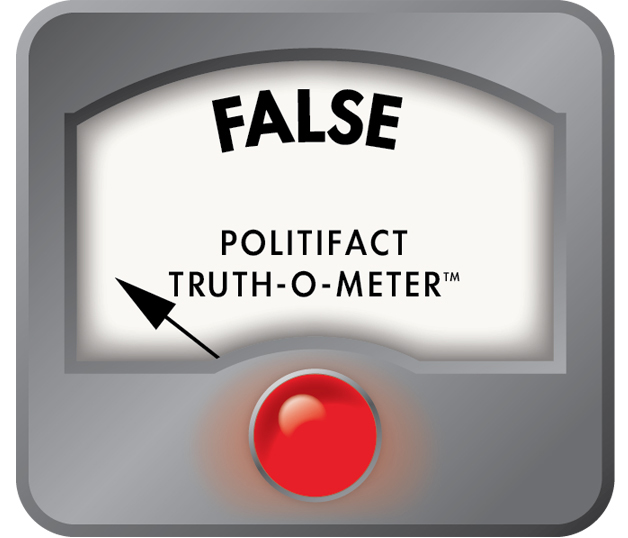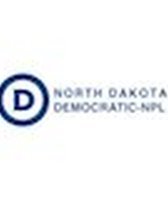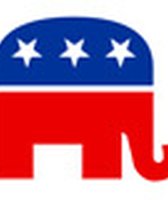Stand up for the facts!
Our only agenda is to publish the truth so you can be an informed participant in democracy.
We need your help.
I would like to contribute
No, USPS doesn't lose $1.46 on every Amazon package
Conservative pundit Eric Bolling joined in on the Amazon-USPS firestorm President Donald Trump initiated recently, putting a price tag on the post office’s purported losses.
"USPS loses $1.46 (on) each Amazon package it delivers," Bolling tweeted.
Is the Postal Service losing $1.46 on each Amazon parcel? No. This number is a suggestion from a detailed report of how much more the post office should charge to increase its revenues. It doesn't represent losses.
For the record, Bolling acknowledged that Amazon wasn’t even the cause of the Postal Service’s losses. "Without Amazon, @usps would owe us a ton more $$ than they already do," Bolling tweeted.
Bolling pointed us to Wall Street Journal and Washington Examiner op-eds that cited the same April 2017 Citigroup study as the source of the $1.46 number.
The study focused on how to make the post office break even, given they have lost $65.1 billion since 2007. The Postal Service reported a net loss of $2.7 billion for 2017. Citigroup acknowledges much of the red ink is due to a 2006 law requiring the Postal Service to pre-fund future retirees’ health benefits.
Citigroup came up with two responses. One was increasing competitive package deliveries; the other was increasing prices on them. (Competitive packages are those USPS delivers for private companies like Amazon.) They focused only on competitive products, which they determined to be the Postal Service’s main hope for solvency. The report recommended the post office increase prices on package deliveries by $1.46, and that’s where Bolling got his number.
That number was arrived at using theoretical pricing models, given that shipping rates for competitive products are kept private between the Postal Service and the company. Another issue is that the price increase was suggested for all of the Post Office’s competitive products clients, not just Amazon. That’s crucial, as the rates the Post Office charges private companies varies depending on the deal each strikes.
The Postal Regulatory Commission, which audits these deals, currently mandates that at least 5.5 percent of the Postal Service’s overhead costs be covered by competitive products. USPS factors in overhead costs when charging companies for shipping their packages. We don’t know the actual cost USPS passes onto its individual clients, because those contracts are kept under wraps.
UPS, a primary competitor, believes the Postal Service should be charging higher rates, according to a complaint UPS filed to the Postal Regulatory Commission. UPS said the overhead costs were outdated, as they were determined in 2006, when packages comprised a much smaller fraction of the Postal Service’s operations.
UPS instead suggested the Postal Service charge a minimum of 24.6 percent to calculate overhead costs. This represents the average share of competitive products in the Postal Service revenue in 2012-14.
The Postal Regulatory Commission didn’t see the merit in that calculation in response to UPS. It did, however, propose a higher floor rate that is under review.
"Such an approach, which would allocate institutional costs to products based on those products’ relative shares of total attributable costs, has long been rejected by the Commission and by economists in general as being inherently arbitrary," the report reads.
In order to arrive at the $1.46 price tag, Citigroup subtracted the price they assumed USPS was charging clients if they only had to cover 5.5 percent of overhead costs from the price USPS would have to charge clients if they had to cover 24.6 percent overhead costs.
But 5.5 percent is a floor, not a ceiling rate. We don’t know how much USPS charges clients, just how much the law mandates they charge at a minimum.
In fact, in 2017, competitive products covered 22.9 percent of the Postal Service’s overhead costs. That’s after accounting for their individual attributable costs (which are the ones the postal commission determines wouldn’t exist if USPS didn’t have a deal with that company). Citi had suggested 24.6 percent.
Competitive prices, then, would only have to increase by 10 cents to contribute the 24.6 percent target in fiscal year 2017.
Our ruling
Bolling said "USPS loses $1.46 each Amazon package it delivers."
The $1.46 figure comes from an April 2017 Citigroup analysis, but Bolling cites the figure inaccurately.
The number is what Citigroup suggested the post office charge if it wanted to make more money by using a new pricing formula. The report made no suggestion that the post office was losing that much money on current, actual deliveries.
Bolling’s statement is not accurate and we rate it False.
Our Sources
Eric Bolling, Tweet, April 4, 2018
Eric Bolling, Tweet, April 4, 2018
Eric Bolling, Tweet, April 4, 2018
Email interview with Michael Bowe, Eric Bolling representative, April 4, 2018
Postal Regulatory Commission, Initial comments of United Parcel Service, Inc. on notice of proposed rulemaking to evaluate the institutional cost contribution requirement for competitive products, Jan. 23, 2017
Postal Regulatory Commission, Annual Compliance Determination Report, March 29, 2018
Postal Regulatory Commission, Notice of proposed rulemaking to evaluate the institutional cost contribution requirement for competitive products, Feb. 2, 2018
Postal Regulatory Commission, Proposal three — a proposal to adjust the "appropriate share" of institutional costs that must be covered by competitive product revenue, Oct. 8, 2015
Citigroup, Examining the Unsustainable Pricing Model of the USPS, April 18, 2017
Email interview, David Partenheimer, UPS spokesman, April 5, 2018
Phone interview, Chris Wetherbee, Citigroup analyst, April 5, 2018
Phone interview with Gail Adams, Postal Regulatory Commission spokeswoman, April 5, 2018
Browse the Truth-O-Meter
More by Manuela Tobias
No, USPS doesn't lose $1.46 on every Amazon package
Support independent fact-checking.
Become a member!
In a world of wild talk and fake news, help us stand up for the facts.






 PolitiFact Rating:
PolitiFact Rating: 









































